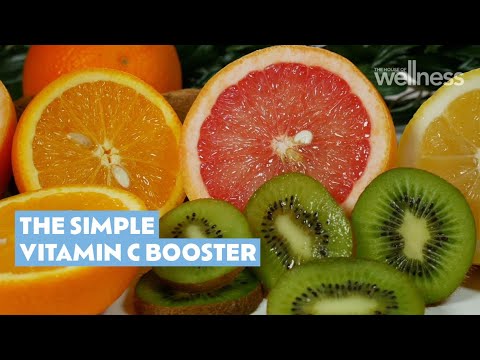#vitaminb6, #pyridoxine, #niacin, #vitaminb3, #serotonin, #neurotransmitter, #sutasty, #RDA, #UL, #microwave, #microwavecooking, #insulin, #hemoglobin, #antibodies, #watersolublevitamin
The table of contents of this video:
00:05 Vitamin B6-rich food.
00:48 Microwave cooking retains maximum water-soluble vitamins, including vitamin B6.
01:09 Vitamin B6 is an essential water-soluble vitamin to maintain your healthy immune system.
01:20 Vitamin B6 helps body make essential biochemical substances.
01:46 How much vitamin B6 do we need daily?
Vitamin B6 Rich Food | VB6 Helps Maintain Your Healthy Immune System
Welcome to SuTasty; this time, we talk about the water-soluble vitamin B6-rich food.
The vitamin b6 rich foods are fortified cereals, poultry, meat, beans and peas, and some fruits and vegetables.
We want to let you know that you may want to try more cooking with your microwave oven, as more vitamins are retained with microwave cooking than cooking with other methods.
Next, you may want to know what vitamin B6 is?
Vitamin B6 is pyridoxine and is a water-soluble vitamin.
Vitamin B6 helps the human body make nonessential amino acids or protein components used to make body cells.
Vitamin B6 helps turn the essential amino acid called tryptophan into two important body substances: niacin, also called vitamin B3 and serotonin, serotonin is a neurotransmitter or messenger in the brain.
Vitamin B6 helps produce other body biochemical substances, including insulin, hemoglobin, and antibodies that fight against infection.
Furthermore, vitamin B6 helps regulate metabolism and maintain a healthy immune system.
How much vitamin B6 do we need?
For adults, the RDA of vitamin B6 is 1.3-1.7 milligrams daily. A deficiency of vitamin B6 can cause confusion and depression.
Do not consume an excessive amount of vitamin B6. The UL for ages fourteen through eighteen is 80 milligrams a day; for nineteen and older, the UL is 100 milligrams daily.
SuTasty made this video. Thank you for watching, and see you next time.
Disclaimer:
All the information on this channel is for showing, teaching, and educational purpose only. All the recipes, tips, and writing are for informational purposes only. All the information on this channel is not intended as medical advice, diagnosis, or prescription. Please consult your physician/doctor before trying any new diet and recipes. The author claims no responsibility to any person or entity for any liability, loss, or damage caused or alleged to be caused directly or indirectly due to the use, application, or interpretation of the information presented herein. Under no circumstance shall we have any liability to you for any loss or damage of any kind incurred due to the site’s use. Your application and reliance on any information on this channel and website herein directed is solely at your own risk. SuTasty is an authentic food & Nutrition video publication channel; SuTasty Canada produces all videos and writings originally. This channel owns the copyright of all content, and any reproduction of this channel’s content is prohibited without permission.
What is RDA?
RDA means Recommended Dietary Allowances. RDA is the dietary intake value that represents what you need to take in on a daily basis.
RDA:
Means the Recommended Dietary Allowance, the daily nutritional sufficient nutrient level. RDA is the dietary intake value that represents what you need to take on a daily basis.
UL:
The tolerable upper intake level.
This means the highest average daily nutrient intake level
likely to pose no risk of adverse health effects to almost all individuals in a given life-stage and gender group.
IU:
The IU is an International Unit, usually used to measure fat soluble vitamins including Vitamin A, D and E. The conversion of IU to mg varies depending on the nutrient.
Please subscribe to Your Free Nutrition Video Library, SuTasty, all free nutrtion videos made for you!
https://www.youtube.com/channel/UCZztU1mSaubV_VJ254ro4ag
Food Nutrition and Nutrients videos:
vitamins videos:
B vitamins videos:
Minerals videos:






